Edge Sharpness
Now let’s see how these lenses fare further away from the frame. This is from the right edge of the frame:

When both lenses are wide open, the Zeiss has a very clear upper hand in edge resolution. The Touit 32mm maintains decent sharpness on the edge right from wide open. While not blisteringly sharp here, it’s far better than the Fuji 35mm, which displays notable softness on the edge wide open.
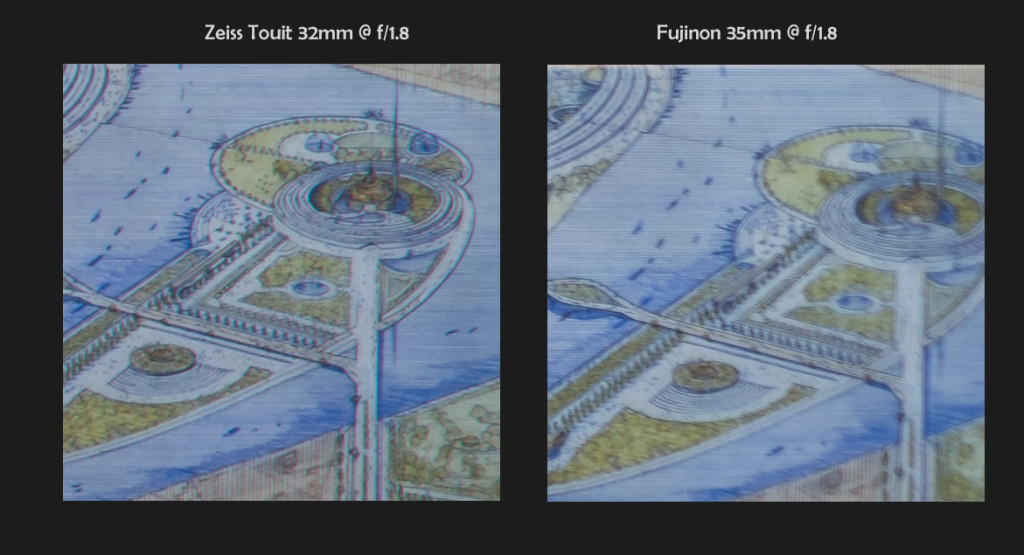
With both lenses at f/1.8, the Fuji still lags behind by quite a bit. This continues even at f/2.8, as seen below:
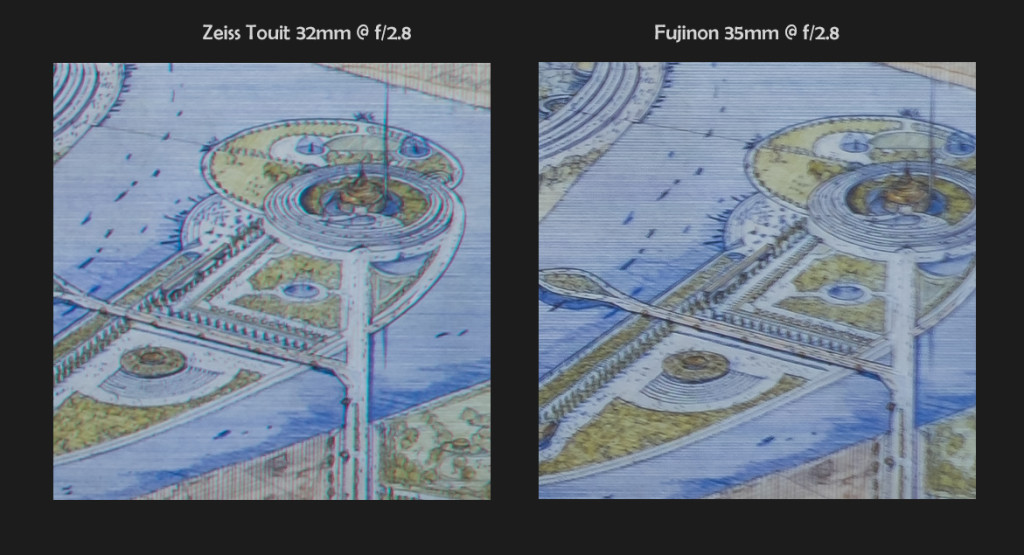
The Fuji has definitely closed the gap here, though the Zeiss is still slightly sharper. Interestingly enough, the Zeiss is showing little improvement as things get stopped down, and as you’ll see below, the Fuji comes back strong by f/4:
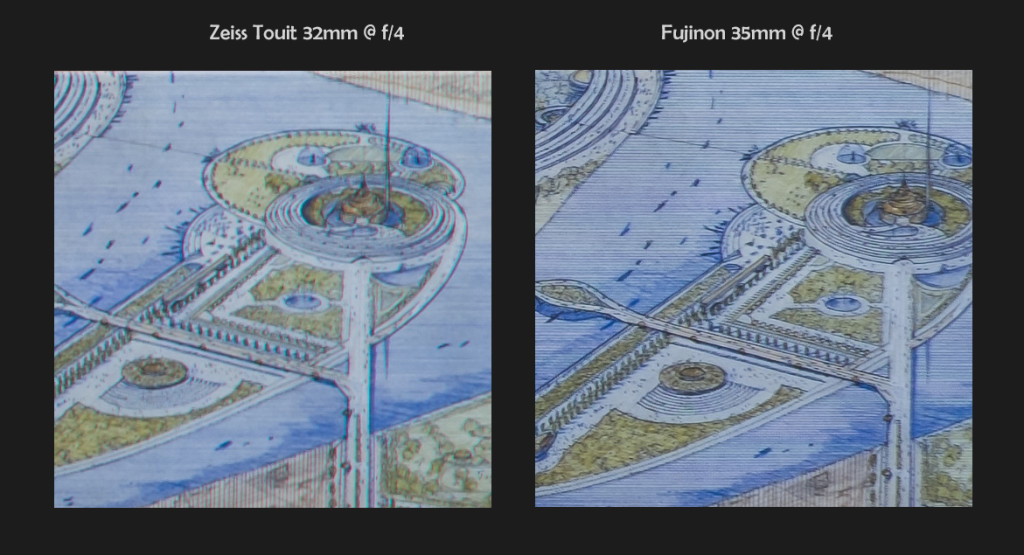
By f/4, the Fuji has not only caught up to the Zeiss, but has leapfrogged it. The Touit 32mm shows essentially zero improvement on stopping down, while the Fuji continues to get sharper and sharper. At f/4, the Fuji is very sharp on the edge, and handily surpasses the Zeiss.

With both lenses at f/5.6, the Fuji 35mm f/1.4 is again the clear winner. The Zeiss has finally showed some improvement, but the Fuji shows even more improvement, with tack sharp edges by f/5.6.
The winner here? Again, the lenses somewhat tie. The Zeiss is significantly sharper on the edge at wider apertures, while the Fuji is notably sharper on the edge stopped down. Which one is more important to you will depend a lot on how you shoot, though for me, I’d rather have the Fuji’s characteristics here if I had to choose…the soft edges wide open aren’t much of a concern, as most of my wide open shooting with a lens like this wouldn’t require edge sharpness, while stopped down, I do want the images to remain sharp all the way to the corners. However, your needs may be different.
Speaking of those corners, let’s look at how each lens fares in the extreme corners.
Corner Sharpness
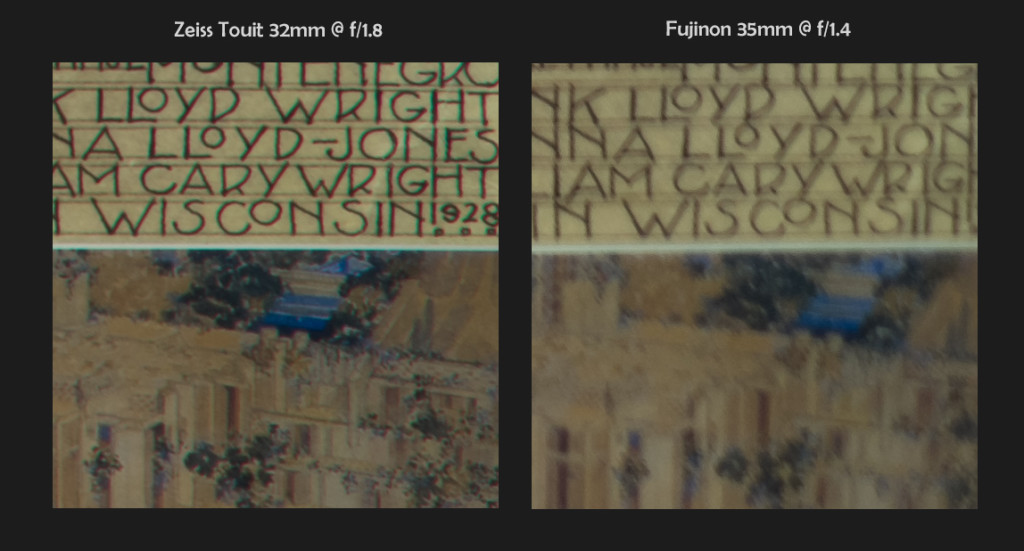
As you’d expect after seeing the edge comparisons, the Zeiss handily kicks the Fuji’s rear end in corner sharpness wide open. The Zeiss certainly isn’t tack sharp here, but there’s good definition and some detail, though also a fair bit of lateral chromatic aberration. The Fuji shows no visible CA, but it also shows no visible detail with the corners at f/1.4 turning essentially to mush.
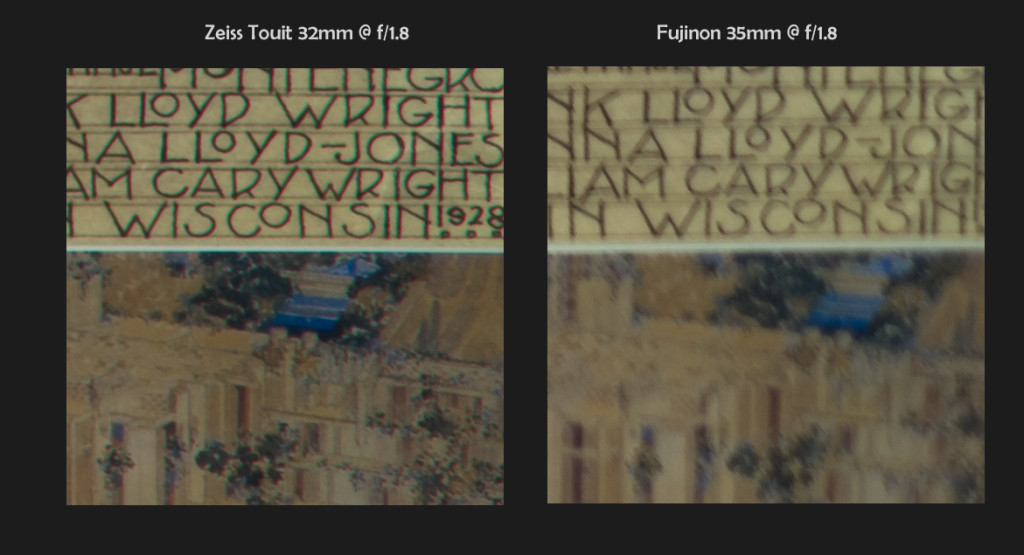
At f/1.8, the situation doesn’t improve much for the Fuji. The Zeiss is still massively sharper, though that CA shows no signs of abating.
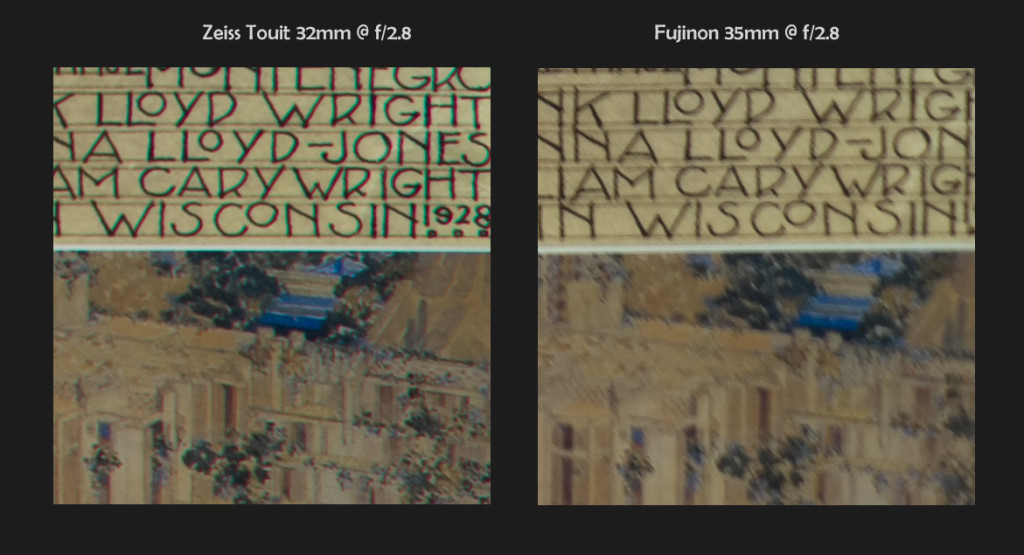
By f/2.8, the Fuji 35mm is showing signs of improvement, with some detail able to be discerned, though the Touit 32mm is still handily outresolving its less expensive competition. CA is still an issue, though.
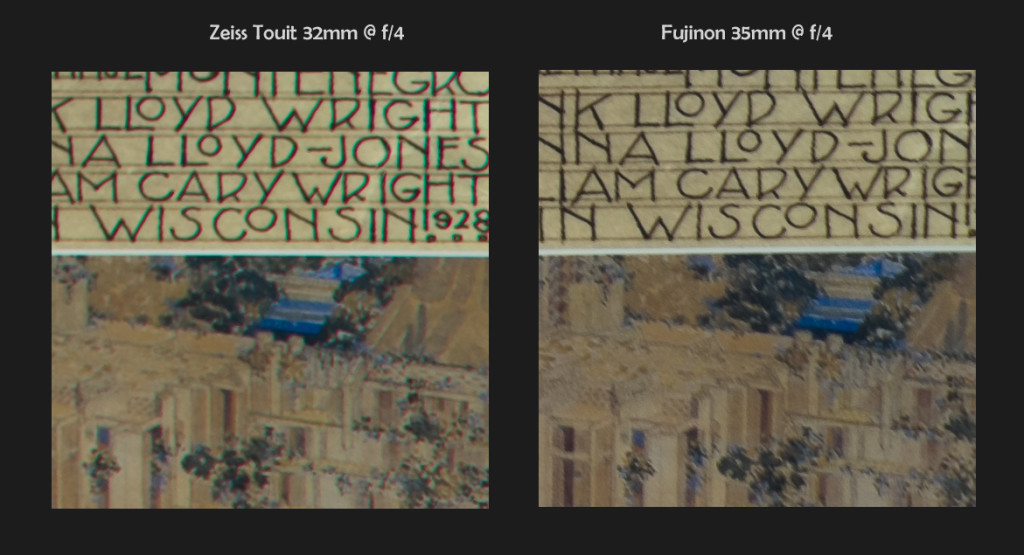
As with the edge crops, the Fuji makes major strides by f/4, showing what appears to be similar levels of detail to the Zeiss. However, neither lens is tack sharp at this point, with the CA from the Zeiss having a detrimental effect and the Fuji still showing what almost appears to be a nervous jitter to the detail. All things considered, though, I prefer the Fuji corner at f/4.
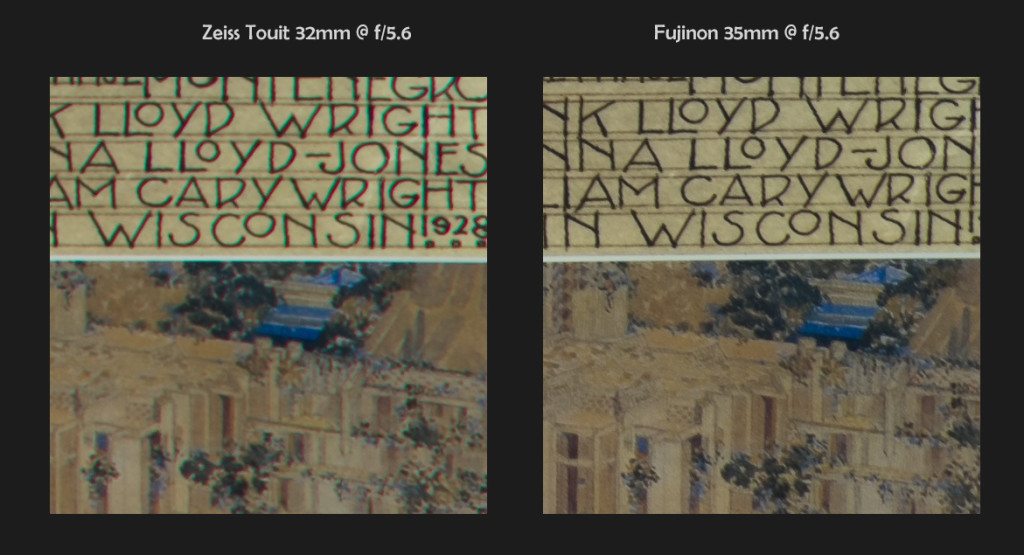
And by f/5.6 again the Fuji 35mm f/1.4 has surpassed the Zeiss 32mm f/1.8. While not razor sharp, the corners here show a lot of detail in the Fuji shot, and absolutely zero chromatic aberration. The Zeiss on the other hand still shows a little softness and a lot of CA.
As could be expected, the corners are similar to the edges: The Zeiss is clearly superior at wide apertures while the Fuji is superior at the smaller apertures. While not shown here, I did, for my own interest, correct the CA of the Zeiss lens for the f/4 and f/5.6 shots. To my eye, when corrected for CA, the corners are essentially identical between the two at f/4, while the Fuji still has a clear resolution advantage at f/5.6.
Finally, let’s look at bokeh.





Leave a Reply